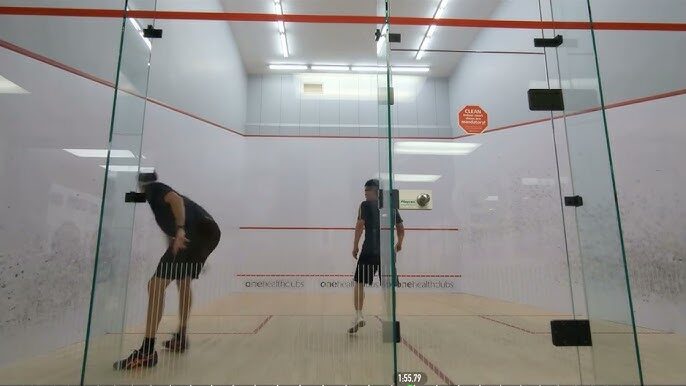Selecting the right string for your squash racket can significantly affect your performance on the court. Whether you’re a casual player or a seasoned pro, understanding the different types of strings available, their characteristics, and how they can enhance your game is crucial. This guide will walk you through everything you need to know about the best strings for squash rackets and how to choose the one that suits your playing style.
Understanding Squash Strings
Before diving into the top string options available, it’s essential to understand the basics of squash strings.
Types of Squash Strings
- Monofilament Strings
These strings are made from a single strand of material, typically nylon or polyester. They are known for their durability and provide a firm feel, making them ideal for players who prioritize control over power. Monofilament strings are often favored by advanced players who hit with high precision. - Multifilament Strings
Multifilament strings are made from multiple strands of material, often combining synthetic fibers or natural gut. These strings offer a softer feel and better comfort, making them ideal for players who prefer more power and control. They are especially good for players with elbow or shoulder issues, as they reduce the shock impact.
String Gauge (Thickness)
Squash strings come in different thicknesses, commonly referred to as gauges. The gauge refers to the diameter of the string, with lower numbers indicating thicker strings and higher numbers indicating thinner strings.
- Thicker Strings (16-17 gauge): Thicker strings offer more durability and control but may sacrifice some power.
- Thinner Strings (17-18 gauge): Thinner strings provide more power and a better feel, but they are less durable and may break more easily.
String Tension
The tension of the strings plays a significant role in the performance of your racket. Generally, higher tension provides more control but less power, while lower tension offers more power but less control. The recommended tension can vary depending on your playing style and preference.
- Higher Tension (28-30 lbs): Ideal for players seeking control and precision.
- Lower Tension (22-25 lbs): Best for those looking for power and a larger sweet spot.
Top Squash Strings for 2025
Here are some of the top-rated squash strings that have earned their place in the market. Each string is designed to suit different playing styles, so consider what matters most to you when selecting the best one.
Tecnifibre 305
The Tecnifibre 305 is a popular choice among professional players for its excellent power and control. This multifilament string provides a superb blend of comfort, durability, and feel, making it perfect for players looking for a dynamic performance.
- Pros: Great power and spin, comfortable feel, excellent tension retention.
- Cons: Slightly less durable compared to some monofilament strings.
- Best for: Players who need a combination of power and control.
Ashaway SuperNick XL
If durability is your priority, the Ashaway SuperNick XL is a top contender. This string is known for its longevity and affordability, making it a great option for players who frequently hit the ball hard.
- Pros: Long-lasting, consistent performance, and affordability.
- Cons: Less power compared to premium multifilament strings.
- Best for: Casual players or those on a budget who want durability.
Ashaway PowerNick 19
The Ashaway PowerNick 19 strikes a balance between power and control, making it a versatile option for a wide range of players. This string is designed to offer great feel and responsiveness, helping players generate more power without losing control.
- Pros: Excellent balance of power and control, responsive feel.
- Cons: Durability may be an issue for those who play frequently.
- Best for: Players who want a versatile string that performs well in various conditions.
Tecnifibre X-One Biphase
For players looking for exceptional playability and feel, the Tecnifibre X-One Biphase is a premium option. This multifilament string offers an outstanding balance of power, comfort, and durability, making it ideal for players who demand high performance.
- Pros: Excellent feel, power, and playability.
- Cons: Expensive and less durable than some alternatives.
- Best for: Advanced players who prioritize feel and comfort over durability.
How to Choose the Right String for Your Game
Choosing the right string involves considering your personal playing style, budget, and frequency of play. Here are a few tips to help you make the best choice:
- If you’re a power hitter: Look for a string that provides a softer feel and more power, such as a multifilament string like Tecnifibre 305.
- If control is your priority: Choose a monofilament string, which provides better control and precision.
- Consider your budget: While premium strings like Tecnifibre X-One Biphase offer exceptional performance, they may not be suitable for players who need to replace strings frequently.
- How often do you play?: If you’re a frequent player, you may want to opt for a more durable string, such as Ashaway SuperNick XL.
Conclusion
Choosing the best string for your squash racket is a personal decision that can dramatically affect your performance on the court. Whether you’re looking for power, control, durability, or comfort, there’s a string designed to meet your specific needs. Don’t be afraid to experiment with different strings to find the one that complements your game the best.
By understanding the various types of strings available and their features, you’ll be better equipped to make an informed decision. Remember, the right string can take your game to the next level!




